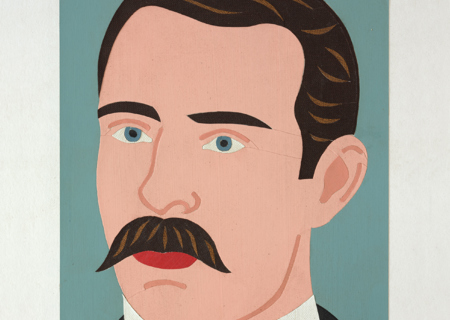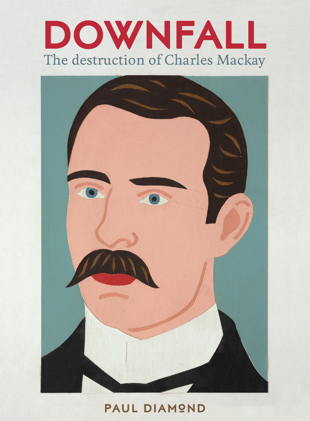Roger M. Smith, a Wellington PhD student in German Poetry and Rights Officer at the Museum of New Zealand Te Papa Tongarewa, has reviewed Paul Diamond’s most recent book, Downfall: The Destruction of Charles Mackay. The review appeared in the November issue of The National Oral History Association of New Zealand Te Kete Kōrero-a-Waha o Te Motu:
‘The German word for downfall is Untergang. It has a special resonance when associated with the years between the First and Second World Wars in Germany, where the social, political and economic upheaval of the period was felt acutely. And it is here, on the violently contested streets of Berlin in 1929, that the New Zealander Charles Mackay’s life ends and Paul Diamond’s new book begins. Downfall: The destruction of Charles Mackay is the impressive culmination of a personal journey for Diamond that began twenty years ago as research with Prue Langbein for a radio feature, and is now a handsome and engagingly written book.
When Charles Mackay, Whanganui’s charismatic mayor, shot and almost killed a young writer in 1920, it caused a sensation throughout New Zealand. The writer, D'Arcy Cresswell, had been trying to blackmail Mackay, and the price for keeping secret Mackay’s homosexuality was that he would resign his mayoralty with immediate effect. Mackay’s panicked response to Cresswell (who himself had same-sex relationships), his subsequent trial and imprisonment, and later exile to Europe, are the substance of the first chapters of the book. Here Diamond’s research really shines, as he paints the clearest picture yet of one of the most remarkable episodes in New Zealand’s queer history.
In social satire, where political and moral decline are frequently intertwined, the Fall of Man and the fall of a man become surrogates for each other. Mackay, in a fatal way, became the real-world embodiment of what happens when political hubris comes up hard against popular morality. The irony in Mackay’s case is that his death comes precisely at a moment when personal reinvention, if not actual redemption, seems almost possible in 1929 Berlin – figuratively and physically a world away from Whanganui.
In the two final chapters of the book, “Nemesis” and “Erasure”, Diamond addresses the concerted effort by numerous people and organisations over the years to obscure the history and wipe Mackay from the official record. From changing street names to physically erasing Mackay’s name from the stonework of Whanganui’s Sarjeant Gallery, Mackay’s story has been deliberately minimised in the hope that he would be forgotten. Yet the great triumph of Diamond’s book is that he draws together the multiple strands of research by the many historians who have striven to understand who Mackay and Cresswell were, to surface queer history, and find the truth to what led to Mackay’s downfall.
Ultimately this book is a magnificent act of reclamation, of recovering a history that has been long and deliberately erased, of reassessment of the two central figures, Mackay and Cresswell, and of putting back into the record something which has been largely expunged in the century since the events described happened. We may never know what really lay behind Cresswell’s attempt to blackmail Mackay, but we now have a much more detailed picture of its disastrous consequences.’


